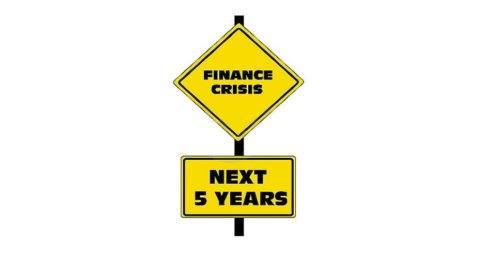“With the US economy yelding firmer data, some researchers are beginning to argue that recoveries from financial crises might not be as different from the aftermath of conventional recessions as our analysis suggests. Their case is unconvincing.”
It is the first step of a recent and interesting article by two scholars of the caliber of KS Rogoff and KM Reinhart “Five Years After Crisis, No Normal Recovery” (March, 2012), which leads us to question the effective duration of the crisisi that we are living, with some lessons of the past which help to give greater awareness of our expectations. At least that's what the two economists seem to suggest, who have reviewed dozens of economic crises that have occurred over the centuries. A look at the certainties of the past and not at the uncertainties of the future!
Well, say the two authors, economic crises can be ascribed to two events: of nature conjunctural and by nature financial, with substantial differences as to their duration.
In the first case, a few months or quarters may be enough to get out of it. The second case, on the other hand, is far more problematic, so much so that on average it would take almost 5 years for some economic variables to return to pre-crisis levels. The recession triggered by financial turmoil is, therefore, the most dangerous one: the excesses of finance kill, they are a real killer of the markets and the economy, for which it becomes much more difficult to resurrect and resume the temporal trend.
It should also be noted that there are economists from some central banks who are of a different opinion and who judge a recovery period estimated at 5 years as too long.
Now we cannot predict exactly when income, investment and employment will pick up again, but certainly these discussions allow us to understand a little better what is happening in Italy and to put the problem in a more plausible context.
Two key points it seems to us that they emerge clearly.
The first is that i recovery times are very long, despite all the medicines that have been and continue to be administered to our sick economy. If then the medicines accentuate the recession, the 5 years must be counted from the end of the recession and not from the beginning and therefore the recovery times are further lengthened with serious repercussions on the social and political level.
The second reasoning calls into question the profound and not entirely profound links between finance and the real economy and defer to the state of health of our banks, that in 2011 they have altogether recorded in the balance sheet losses of approximately 27 billion euros mostly generated by write-downs of the goodwill produced in years in which the values of the shareholdings acquired above all in other banks were, when not pure fantasy, certainly lacking sufficient prudence. In recent days the Italian Stock Exchange, which had not discounted these latest results, has resumed penalizing the securities of the sector by reconnecting it to the structural income weakness of our system, rather than to the market values of the sovereign securities present in their portfolios.
The adjustments made for impairment of goodwill left less room for adjustments to the loan portfolios, otherwise the overall results would be even more discouraging than the truly modest ones achieved, with exceptions, by Italian banks. Thus, given the current crisis, also 2012 will presumably be marked by almost non-existent profitability, due this time to the no longer deferrable devaluation of growing non-performing loans, with gross non-performing loans that reached 100 billion euro.
What is being tested is therefore very worrying, also because one gets the impression that they are not being talked about (or not if you want to talk) enough, going in search of the real causes.
In fact, it must definitely be recognized that our banking system has excess productive capacity and very limited growth prospects, if not at the price of a profound industrial restructuring. Even in the rich regions of the country, the intermediation activity of banks (large or small) is substantially at the volumes of past years, so that painful downsizings in terms of branches, staff and everything that, in these organizations, has grown enormously over the years of financial euphoria. The problem is that the funds set aside over time to self-finance redundancies have also run out and the retirement age has moved inexorably forward. What's more, the EBA insists on the need for more capital to cover the risks.
So it becomes difficult to decide where to start. And what's more, everyone is arguing that we need to act quickly to ward off the now looming specter of the credit crunch, which instead appears to be the only way to re-establish an adequate ratio between assets at risk and equity required by the supervisory rules. Reason for which it seems to have entered a complicated labyrinth in which, the phase of inappetence for the risk of our banker can even be followed by that of his euthanasia. At the same time, moreover, it seems to us that we are mainly concerned with partial aspects, avoiding analyzing critical issues that have always been known, such as serious operational inefficiencies and the widespread practice of non-transparent credit relationships with so-called related parties, which over time also produces a greater concentration of credit risks.
It must be hoped that the system will begin its reform with determination and at the cost of essential changes in the methods of its corporate governance, to which the application of art. 36 of the Salva Italia decree has given a healthy boost these days at least to eliminate multiple assignments, an unequivocal sign of obvious conflicts of interest. But even here we need to be realistic and think that clearing the tangles created over such a long time is a difficult and perhaps equally long process on which the authorities must not loosen their grip. For the record, a survey conducted some time ago identified the existence of 1200 credit and financial relationships with related parties in Mediobanca: practically all the Italian companies that count.
And one must hope that renewal of corporate governance and industrial reconversion of the system are not launched too late, otherwise Italian taxpayers could be called upon to bail out, in addition to the State, also the banks, perhaps with some solution in Spanish sauce. And this would be too much, because it would demonstrate that, even in the Italian case, the way out of the economic crisis gripping us could be much longer and more complex due to the described problems of our banking system.




